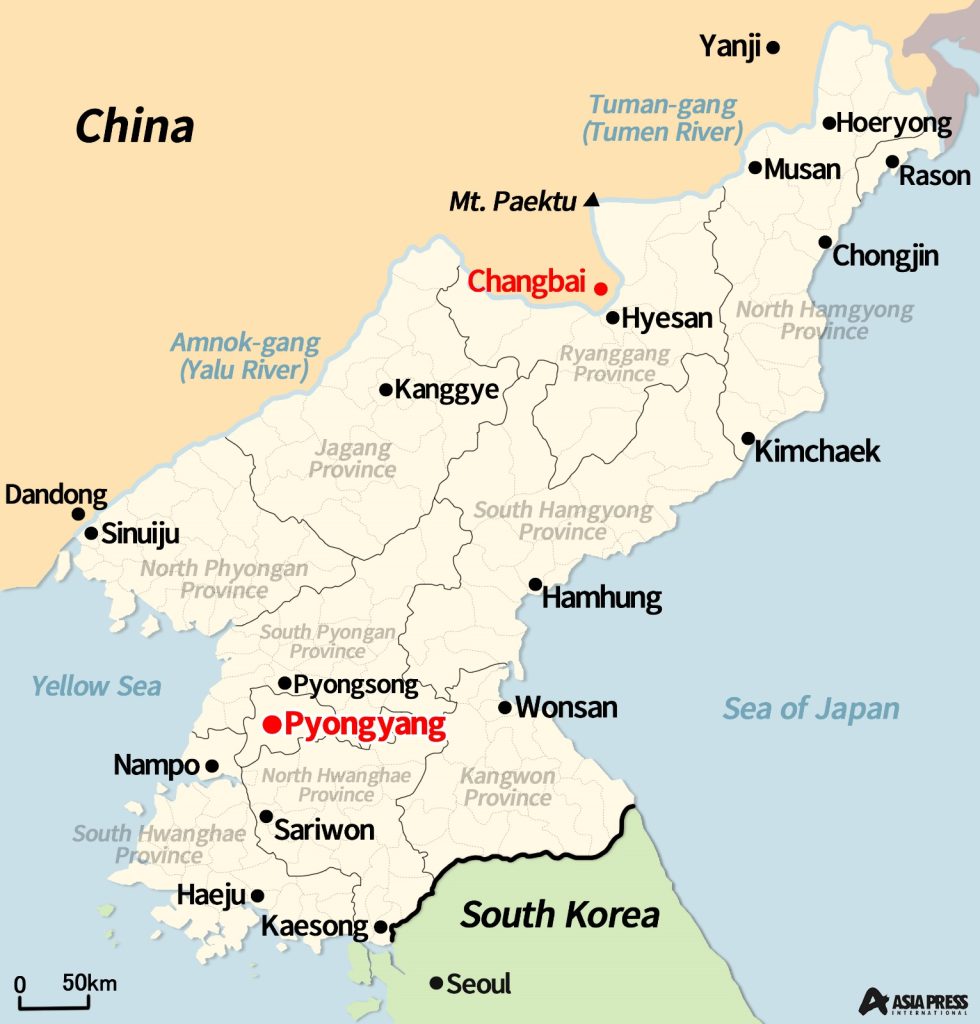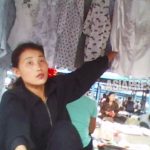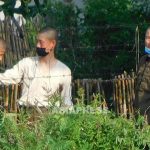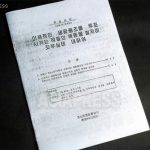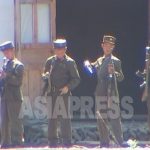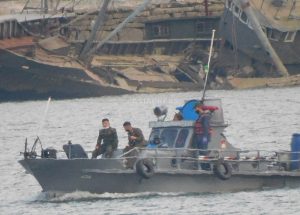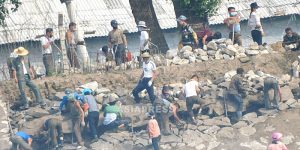
The number of passenger trains entering the Yanggang Province area has significantly decreased recently. The number of train riders, which had sharply declined due to North Korea’s zero-COVID policy, has not increased even after the relaxation of pandemic-era controls. Meanwhile, there are efforts to revive the national distribution network, primarily using freight trains, such as organizing dedicated trains to supply domestic products to state-owned stores. (JEON Sung-jun / KANG Ji-won)
◆ Passenger train services reduced due to decrease in travelers
In June, a reporting partner in Hyesan, Yanggang Province, told ASIAPRESS that the number of passenger train services has been declining significantly as of late. Hyesan, a border city in the north, is connected by an inland line that passes through North Pyongan Province and Jagang Province to the west, and the East Coast line railway that passes through North and South Hamgyong provinces to the southeast.
According to North Korea's train schedule, Train No. 1 (Pyongyang-Hyesan, East Coast line) and Train No. 3 (Pyongyang-Hyesan, Northern Inland line), which depart from Pyongyang for Hyesan, are supposed to operate once a day each. However, delays and cancellations are common due to electricity issues and deteriorating railway conditions.
The reporting partner said that passenger trains, which usually operated every other day, have been reduced to about once a week, stating:
"It seems to be because there are fewer people traveling by train due to controls on private business and movement, and also because it's the farming mobilization' period (May-June)."
◆ Freight cars increase due to government logistics plans
According to what the reporting partner learned from railway officials, while passenger train operations have decreased, freight car operations have been maintained or even increased. This appears to be due to changes in the state transportation plans.
"Currently, private distribution is not allowed, so goods are not coming in properly. Therefore, they have arranged to operate covered freight cars specializing in transporting manufactured goods 2-4 times or more per month, allowing goods produced in North Hamgyong Province to be transported to Pyongsong and Sinuiju, and goods from those areas to be brought into Kim Chaek, Kilju, and Yanggang Province."
This means that the North Korean authorities have been relying heavily on railway transportation as they have recently strengthened state control over distribution and promoted the revitalization of the state-owned distribution network.
The reporting partner also said that the government is attempting to make stations distribution hubs in each region.
"They have built new supply centers or storage warehouses at every station so that incoming goods can be quickly delivered to state-owned stores."
◆Hand carts are still key to logistics in North Korea
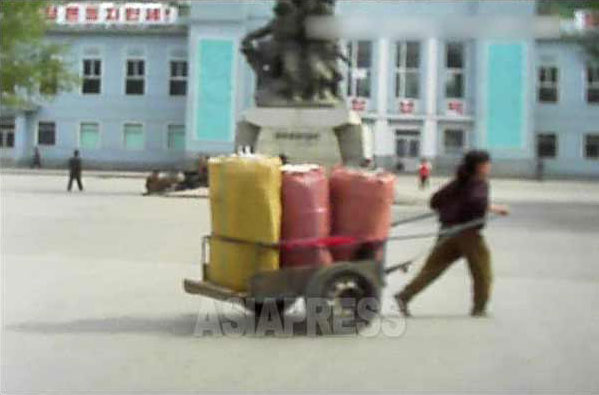
Nevertheless, state-planned transportation through railways seems to have limitations from a practical perspective.
"Because cars can't transport properly due to fuel costs, they ordered transportation by train from February this year, but trains are not operating properly due to frequent power outages. Even when goods are transported, there are no proper means of transportation to each store, so they are resorting to using personal hand carts to carry them."
The Handcart Porter Is Now an Indispensable Business
※ ASIAPRESS communicates with its reporting partners through Chinese cell phones smuggled into North Korea.
